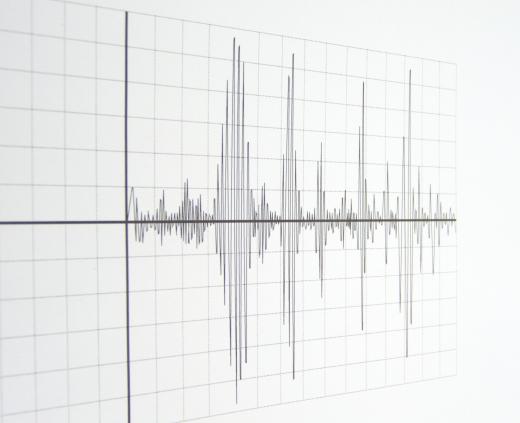What Is Seismic Data Acquisition?
Seismic data acquisition is the process of gathering information about the composition of the earth below the surface. This data is acquired through the use of machines that create and then listen for vibrations. Once gathered, the data can be used to create an image of the various layers of rocks and minerals underground. Mining companies, construction companies, and government agencies can all make use of data acquired through this method. Seismic data may also be used to determine the magnitude and location of earthquakes.
In order to gather seismic data, a number of tools must to be employed. Seismic data acquisition also requires tools that generate vibrations, such as pounding machines or explosives. Geophones, which are instruments that measure the vibrations in the earth's surface are used to gather information about the movement of the earth. Seismographs may also be used to measure vibrations, though they are not used as frequently as modern sensing devices. Computers are then used to analyze and organize this information.

When performing seismic data acquisition to determine the types of materials found underground, a team of professionals sets up the necessary equipment at a work site. Geophones are placed around the site and hooked up to computers that analyze the data acquired. A specialized vehicle that pounds the ground with a heavy metal plate can be used to vibrate the ground up to a depth of about 60 feet (18.3 meters). Seismic data acquisition further underground requires the use of explosives, such as dynamite, that are placed in holes drilled at the site.

Though modern technology has made seismic data acquisition quicker, simpler, and more accurate, this type of data has been gathered since the beginning of the 20th century. It is still used for many of the same purposes, including locating oil, natural gas, or valuable minerals. Many companies that specialize in seismic data acquisition work for mining companies looking for additional resources, though they also be employed by government agencies or construction companies in order to learn more about the composition and stability of a certain region.
The study of earthquakes also requires seismic data acquisition. In this case, the data is acquired passively through listening stations set up at strategic locations. When the earth shakes because of an earthquake, seismic data is acquired and then analyzed to determine the magnitude, location, and depth of the earthquake.
AS FEATURED ON:
AS FEATURED ON:












Discuss this Article
Post your comments